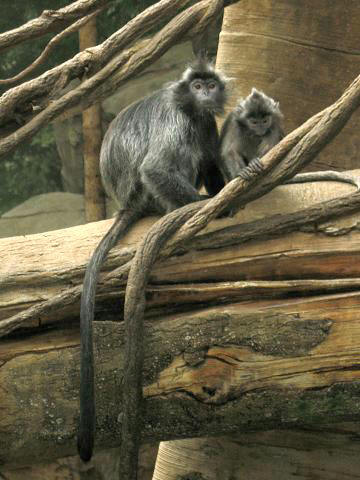Facts About Silvered Leaf-monkey
The silvery lutung, also known as the silvered leaf monkey or silvery langur, is a captivating Old World monkey found in the coastal, mangrove, and riverine forests of Peninsular Malaysia, Sumatra, and Borneo. These medium-sized primates are easily identified by their uniform silvery fur, long tails, and distinctive crested fur on their heads.
Silvery lutungs have a specialized diet primarily composed of leaves, and they have evolved unique adaptations in their stomach and teeth to efficiently process this tough, fibrous food. Being diurnal, they are active during the day and spend most of their time in trees, leading an arboreal lifestyle.
These monkeys live in social groups that follow a matrilineal and harem-based structure. Each group has its own home range where they forage for food during the day and seek shelter together in a tree at night. Communication among silvery lutungs is quite complex, involving a variety of vocalizations to convey different messages.
Breeding occurs throughout the year, with females typically giving birth to a single infant after a gestation period of around 181 to 200 days.
Despite their intriguing behaviors and adaptations, silvery lutungs are currently listed as vulnerable by the IUCN. They face significant threats from habitat loss due to logging and the expansion of oil palm plantations. Additionally, they are hunted for their meat and captured for the pet trade.
Conservation efforts are essential to protect these unique monkeys and their habitats. Genetic studies suggest that the silvery lutung species group, known as Trachypithecus cristatus, evolved relatively rapidly around 0.95 to 1.25 million years ago.

 Laos
Laos